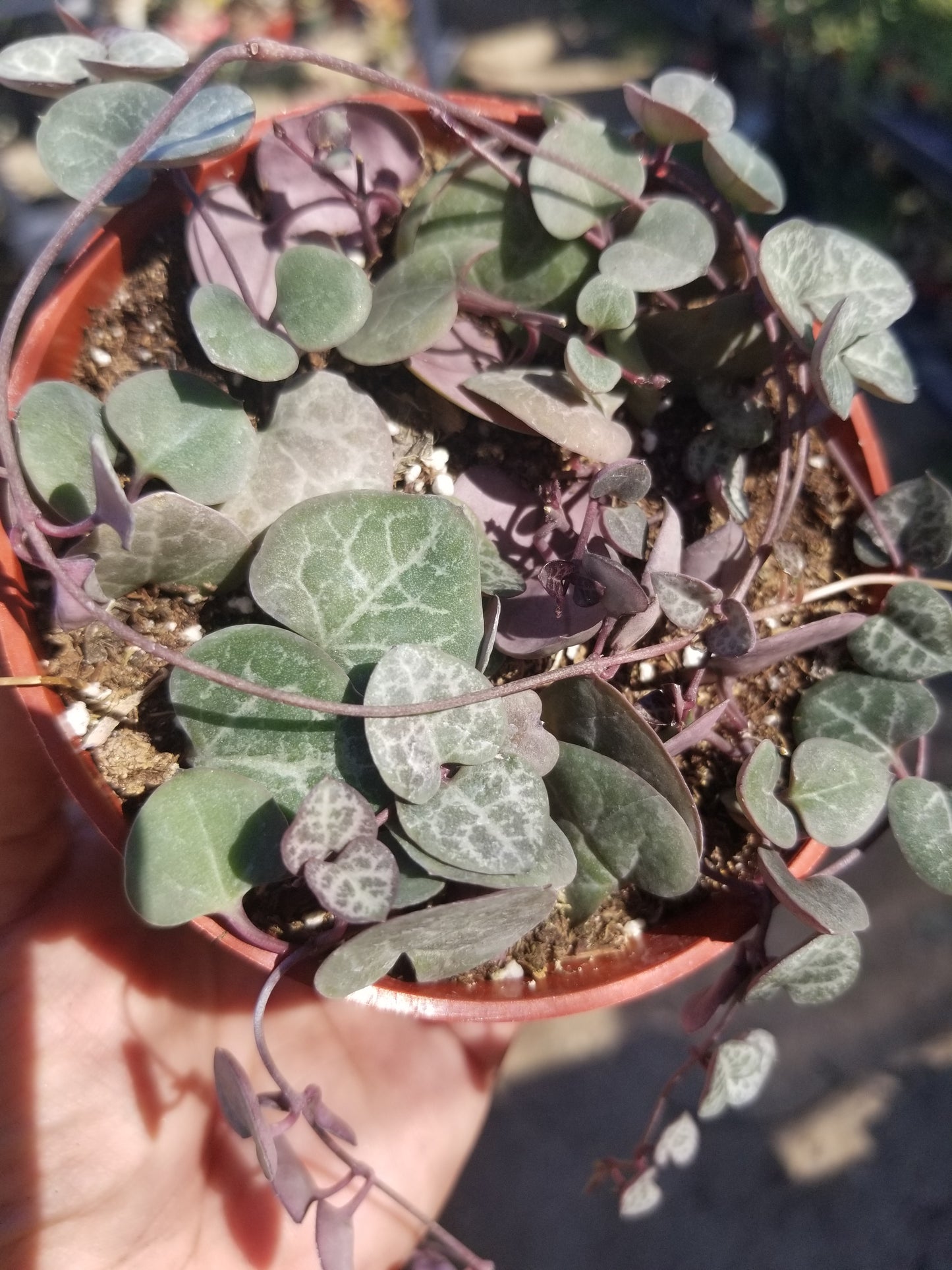Beaultiful Desert Plants
Strings of Hearts (5" pot)
Couldn't load pickup availability
Strings of Hearts
* Ship Bare root (without pot and soil) Pot size is only notated for your reference.
* If you are going plant your cactus or succulent in a pot, have it prepared beforehand with cactus mix soil (recommended), then water lightly.
*If you going to plant it into the ground, ensure proper drainage
*We Only ship Priority to ensure your Succulents plant will take between 2 to 3 days to arrive, we are not responsible for any the shipping carriers are delays.
* My Jades have really short roots, We reefed to the gallons that are planted in the add so you can see or estimate the actual size of the plant, do not expect to receive any Jade with long roots, That's why these trees are easy to Trim and give a shape as a bonsai tree and plant them in a shallow pot.
* We try to ship our succulent plants as soon as we get the order is customer responsibility to be aware of the plant arrival also customers will get a notification by email. If the customer wants to delay or change the day of the shipment please contact us as soon as possible.
*We take great care in the packaging of your plants, but unfortunately the same cannot always be said in how they are handled once they leave us
.*Is the customer responsibility to purchase a (Heat pack) if the Succulent plant is ship to a cold area, we usually recommended it if the whether is 35* or lower, If you are purchasing a large succulent plant please make sure you buy enough heat pack to cover the plant (1 heat pack every 12") We are not responsible for damages to the Succulent plant if is NOT enough coverage of the heat pack, and if is delay by USPS, the heat only will keep the box warm for 72 hours.
Ceropegia:
is a genus of plants within the family Apocynaceae, native to Africa, southern Asia, and Australia.[1][2] It was named by Carl Linnaeus, who first described this genus in his Genera plantarum, which appeared in 1737.[3] Linnaeus referred to the description and picture of a plant in the Horti Malabarici as the plant for which the genus was created.[4] In 1753 he named this species as Ceropegia candelabrum.[5] Linnaeus did not explain the etymology but later explanations stated that the name Ceropegia was from the Greek[6] word keropegion κηροπηγɩον.[7][8] This means candelabrum in Latin, which has a broader range than the modern word - "a candlestick, a branched candlestick, a chandelier, candelabrum, or also lamp-stand, light-stand, sometimes of exquisite workmanship.
An alternative explanation for the name was given later by William Jackson Hooker in 1830 in Curtis's Botanical Magazine in the description of Ceropegia elegans: "From κηρός, wax, and πηγή, a fountain, in allusion to the delicate, waxy umbels of some species".[10] However, four years later Hooker gave the etymology in the description in the same periodical of Ceropegia lushii as "remarkable for the peculiar shape of its flowers, frequently arranged in umbels, hence its name κηροπηγɩον, a candelabrum, or lamp-stand".[11]
They have many common names including lantern flower, parasol flower, parachute flower, bushman's pipe, string of hearts, snake creeper, wine-glass vine, rosary vine, and necklace vine.
Ceropegia species are traded, kept, and propagated as ornamental plants.[12] In Africa, the roots and leaves of some species are eaten raw[13] and the tubers in India are eaten raw or stewed in curries.
The stems are vining or trailing in most species, though a few species from the Canary Islands have erect growth habits. Among some species, such as Ceropegia woodii, the nodes swell, and the roots similarly expand to form tubers beneath the soil surface. The leaves are simple and opposite, although they can be rudimentary or absent. Especially in certain succulent species, the leaves may also be thick and fleshy.
The flowers have a tubular corolla with five petals most often fused at the tips, forming an umbrella-like canopy, a cage, or appendage-like antennae.[14] The flowers of this genus are adapted for pollination by flies. A great diversity of fly species are associated with ceropegias. The flowers are often inflated and fused at several points, forming a cage. Flies become momentarily trapped inside, accomplishing pollination as they move about.
Share





Subscribe to our emails
Be the first to know about new collections and exclusive offers.





